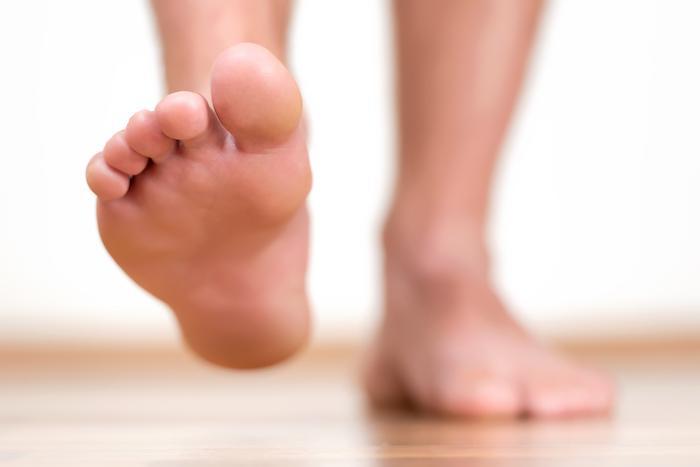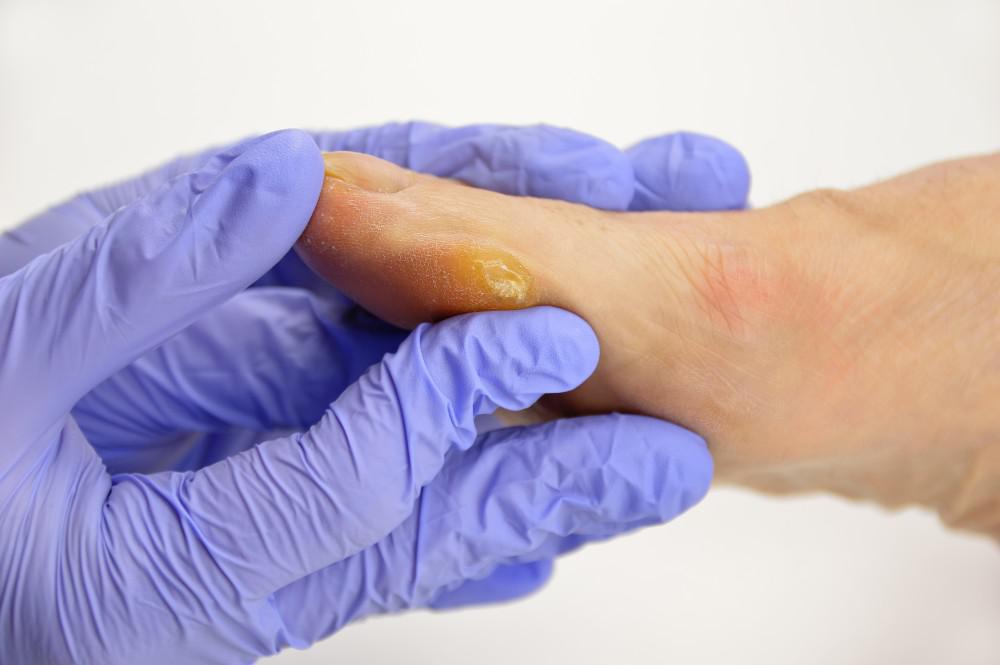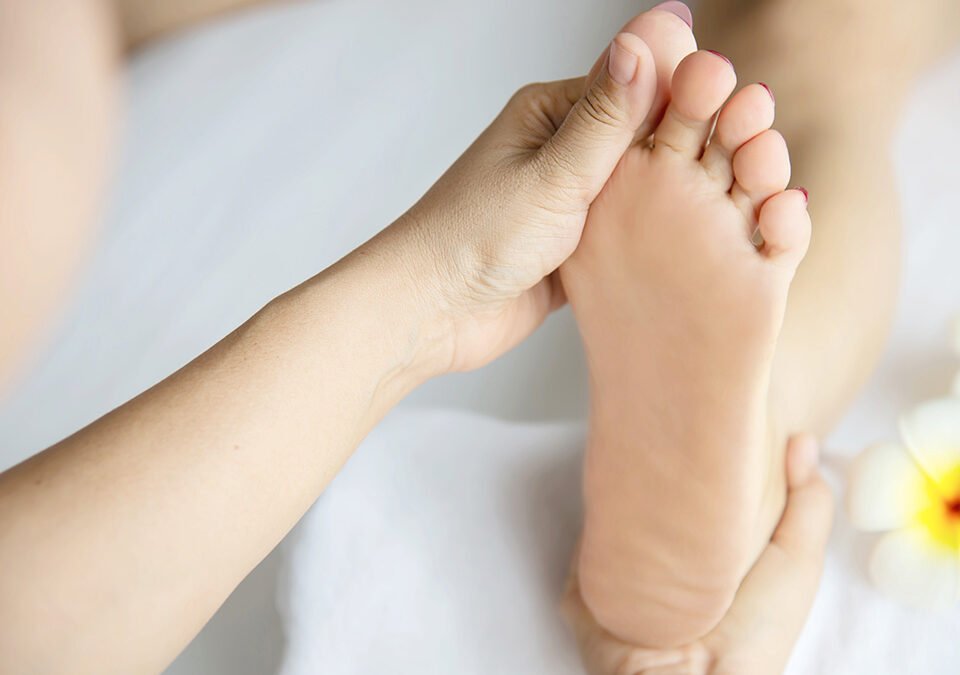Is It Possible To Prevent Diabetes
Some diabetes foot-related problems can be prevented by taking careful steps to observe and care for your feet. Keeping blood sugar levels under control , and following your recommended diet and exercise program are the best way to prevent all complications of diabetes, including foot problems. In addition to keeping your diabetes under control, you can take steps to care for your feet, including the following:
- Wear comfortable, closed-toe footwear at all times. Special shoes are available for people with bunions or foot deformities if these are necessary. Be sure no objects are trapped inside the shoes that could cut or injure your feet.
- Don’t walk barefoot, even at home. Be sure your feet do not get burned by walking on very hot pavement in summer
- Always wash your feet with warm water and dry them well after washing.
- Check your feet daily for any sores or problems.
- Apply lotion to dry areas, especially heels, but don’t use lotion between the toes. Corns and calluses can be lightly smoothed with a pumice stone. Never use scissors or razors to cut away corns or calluses.
- Trim toenails straight across, and do not cut the corners shorter than the rest of the nail.
- Be sure that your doctor checks your feet at every checkup.
- Stop smoking, if you are a smoker. Smoking further increases the risk of arteriosclerosis and poor circulation to the feet.
When To See Your Doctor
If you experience any of these symptoms, dont wait for your next appointment. See your regular doctor or foot doctor right away:
- Pain in your legs or cramping in your buttocks, thighs, or calves during physical activity.
- Tingling, burning, or pain in your feet.
- Loss of sense of touch or ability to feel heat or cold very well.
- A change in the shape of your feet over time.
- Loss of hair on your toes, feet, and lower legs.
- Dry, cracked skin on your feet.
- A change in the color and temperature of your feet.
- Thickened, yellow toenails.
- Fungus infections such as athletes foot between your toes.
- A blister, sore, ulcer, infected corn, or ingrown toenail.
Most people with diabetes can prevent serious foot complications. Regular care at home and going to all doctors appointments are your best bet for preventing foot problems .
Extremely Dry Itchy Skin
Dry, itchy skin
If you have diabetes, youre more likely to have dry skin. High blood sugar can cause this. If you have a skin infection or poor circulation, these could also contribute to dry, itchy skin.
Take action
- Tell your doctor about your extremely dry skin. Gaining better control of diabetes can reduce dryness.
- If you continue to have dry skin after you gain better control of your diabetes, a dermatologist can help.
Recommended Reading: Does Diabetes 2 Go Away
Diabetes And Veins: How Your Veins Are Affected By Diabetes
Diabetes affects over 30 million Americans, according to the most recent data provided by the CDC. People most often attribute diabetes to blood-glucose levels, insulin, and even diabetic shock. But diabetes negatively affects the body in other ways. One area that often gets overlooked is the venous system and how your veins are affected by diabetes.
Types Of Diabetic Foot Problems

Diabetes that isnt well managed can lead to slower healing. These slow-to-heal wounds can lead to infections.
Other foot issues, like , are also common in people with diabetes. While calluses may not seem worrisome, if left untrimmed they can turn into ulcers or open sores.
People with diabetes are also at risk for Charcot joint, a condition in which a weight-bearing joint progressively degenerates, leading to bone loss and deformity.
Because of nerve damage, people with diabetes may not immediately notice that there are problems with their feet.
Over time, people with diabetic neuropathy can develop foot problems that cant be healed, which can lead to amputations. Diabetes is one of the leading causes of lower-extremity amputations in the United States.
Also Check: How Can Type 2 Diabetes Be Treated
Signs Of Foot Issues With Diabetes
Poor blood circulation and blood flow can slow the healing process of sores on your feet, putting you at risk for serious life-threatening complications.
Even if you havent lost feeling in your feet, bring the following symptoms to your doctors attention. Signs of feet issues include:
You can avoid serious diabetes complications by seeing your doctor and getting treatment early for conditions that affect your feet.
What Are Treatment Options For The Pain
Along with taking the steps above, you should talk to your doctor if your foot pain is too much to bear. Diabetes-related foot pain is treated with medications that target nerve pain as well as medications for pain in general. Here are some of the most commonly recommended ones:
In case you were wondering about popular over-the-counter pain relievers like acetaminophen , ibuprofen , and naproxen , its important to know that these wont work for foot pain from diabetes. They dont improve nerve pain, and worse, they can cause side effects.
Recommended Reading: Is Blindness From Diabetes Reversible
Your Feet Are Important Especially If You Have Diabetes
With diabetes, it means youre much more likely to develop problems with your feet problems that could end up as amputations. But most amputations can be prevented. If you take good care of your feet and check them regularly, you can reduce your risk of developing foot problems.
So watch our video and take a look through our simple steps to having healthy feet every day.
Need some help checking your feet? Watch our video to learn how.
When Should I See My Health Care Provider About Foot Problems
- a cut, blister, or bruise on your foot that does not start to heal after a few days
- skin on your foot that becomes red, warm, or painfulsigns of a possible infection
- a callus with dried blood inside of it,which often can be the first sign of a wound under the callus
- a foot infection that becomes black and smellysigns you might have gangrene
Ask your provider to refer you to a foot doctor, or podiatrist, if needed.
Recommended Reading: Foods Good For Kidney Disease And Diabetes
Signs And Symptoms That Diabetes Affects Your Feet
Are you worried about diabetic foot complications? Here are some common symptoms:
- Burning sensation in feet, especially at night
- Tingling, numbness or a strange feeling on the bottom of the feet
- Poor balance or stability
- Reduced sensation in feet
- Deformities
- Thick callouses
- Very dry skin
- Sores that dont heal
- Poor cicatrization
- Red rash
These Effects Can Lead To Vascular Diseases Such As:
Retinopathy abnormal growth of blood vessels in your retina
Nephropathy a disease that damages the tiny filtering units of the kidney
Neuropathy a condition causing a loss of sensation in the feet and toes
Atherosclerosis caused by high blood pressure, this is when plaque builds up on the walls of arteries
Stroke a blockage in arteries that causes and a loss of blood to the brain
Peripheral Artery Disease the narrowing of arteries
Don’t Miss: Hiv And Diabetes Life Expectancy
Addressing Diabetic Foot Problems
The most important thing you can do to protect your foot health is to be aware of the potential dangers and have us address any problem at the first signs of trouble. There are many preventive measures you can take , but you should also seek our counsel any time you experience any of the following:
- Pain, numbness, or tingling in your feet
- Ulcers that dont heal
- Any breach in your skin, even from a fungal infection or warts
- Swelling
- Changes in skin temperature
In fact, when you have diabetes, youd do well to keep up with your regular appointments with us so that we can monitor your foot health for any potential problems. The fact is that the earlier we intervene, the better can stop serious and life-changing outcomes like gangrene and amputation.
Gangrene And Charcot Foot

Gangrene treatment involves antibiotics to kill bacteria and stop an infection, as well as surgery to remove damaged tissue. Treatment for Charcot foot involves preventing further deformity.
Wearing a cast to immobilize the foot and ankle can gradually strengthen these bones, as does wearing custom shoes or a brace. In severe cases, surgery can help correct a deformity.
Recommended Reading: 30 Carb Meals For Diabetics
The Most Common Diabetic Foot Problems
Far and away the most common diabetic foot threat is neuropathy . Also called peripheral or diabetic neuropathy, this condition develops as a result of high levels of blood sugar and fats in your blood, which can irreparably damage your nerves.
As we mentioned, the prevalence of diabetic neuropathy is 50% among people with diabetes, which makes the complication a very real concern.
There are other foot problems that tend to affect those with diabetes more frequently because of the vascular and nerve damage, such as:
- Corns and calluses
- Fungal infections
- Ingrown toenails
Even if these conditions dont directly stem from diabetes, they warrant extra care because of the compromised nerve and vascular health in your feet.
Tip #: Care For Your Feet Properly
Follow these foot care tips to properly care for your feet:
- Wash your feet daily with non-irritating soap and warm water.
- Avoid soaking your feet.
- Dry your feet completely after bathing, paying special attention to the areas between the toes.
- Avoid applying lotion to the areas between the toes.
- Ask your doctor which lotion is best for your skin type and health condition.
You May Like: Can Type 2 Diabetes Make You Tired
Peripheral Neuropathy Can Have A Lot Of Different Effects On The Lower Extremities
A common side effect of diabetes is peripheral neuropathy. In the feet, peripheral neuropathy affects sensory nerves causing tingling and numbness, autonomic nerves causing increased dryness of the skin or increased sweating, and also motor nerves that affect the muscles. The effect on muscles can cause weakness and problems with proprioception, or monitoring where your body is in space. This in effect causes imbalance, and this is why some diabetic patients feel that their diabetes progression has also affected their balance.
What Causes Diabetes
High blood sugar levels in people with diabetes can cause peripheral neuropathy, the medical term for numbness and loss of sensation due to damage to the nerves that serve the feet and hands.
People with diabetic neuropathy cant feel various sensations, like pressure or touch, as intensely as those without damage to their nerves. On the other hand, peripheral neuropathy is often very painful, causing burning, tingling, or other painful feelings in the feet.
If a wound isnt felt right away, it can go unchecked. Poor circulation can make it difficult for the body to heal these wounds. Infection can then set in and become so serious that amputation becomes necessary.
Checking the feet for abnormalities is a very important part of diabetes care. Abnormalities may include:
Also Check: Glucerna Meal Replacement For Diabetics
Why Do My Feet Hurt
If you have Type 2 Diabetes, and your feet hurt, you are not alone. Many people with diabetes suffer from the pain of peripheral neuropathy. As it turns out, the high blood sugars over time damage the blood vessels. We then see that the vascular system is also interrelated with the nervous system. Imagine that you have tiny bits of plastic floating around in your blood stream, the effect is similar.
The tiny pieces of hard plastic beat up against the sides of your blood vessels and damage them. Its not real plastic, but bits of bad fat floating in there. It hardens, much like the bad cholesterol from animal fats in our blood steam. People with diabetes have dyslipidemia, so they are more prone to have this bad fat floating around in the blood stream.
Once the blood vessels have some damaged areas inside them, thats when you start to feel extra sensitive in your feet. The feet are innervated by the longest nerves that extend from our brain to our toes. This is why people with diabetes feel the pain of peripheral neuropathy in their feet first.
Symptoms are often profound at night, and can alternate from numbness to mild to severe pain. When our feet are numb, our feet cant tell our brain that something is wrong. Therein lies the main problem with diabetic peripheral neuropathy.
How To Improve Circulation For People With Diabetes
Suggestions to improve your blood circulation include:
- Control your blood fat levels.
- Keep blood glucose levels as close to normal as possible.
- Dont smoke. Smoking causes spasm and narrowing of blood vessels. Smokers have more heart attacks, strokes and circulation problems than non-smokers.
- Exercise daily. A brisk walk will help keep the blood flowing around your body.
Also Check: How Much Sugar Diabetes Type 2
What You Can Do To Improve Healing
There are several things a patient can do to improve wound healing. The most important thing is to control the blood sugar level. Healing can be improved by taking these measures:
- Eating a healthy diet and maintaining good nutrition will help to regulate blood glucose levels and also provide the essential vitamins and nutrients to enhance the healing process. Adequate protein, carbohydrates and vitamin C intake are important factors to aid healing. Seek the advice of a registered dietician who specializes in diabetes, if necessary.
- Be aware of your body, especially if you experience diabetic neuropathy. Regularly check for open wounds or pressure points that could develop into a wound. Watch for signs of infection. Seek the medical attention of your primary care physician or other health care professional if you develop any areas of concern.
- Keep pressure off of a wound to aid healing.
- Chronic inflammation is a common symptom in many chronic diseases, including diabetes. By engaging in regular aerobic exercise, chronic inflammation can be reduced. Exercise lowers the blood sugar and also helps with weight management, another factor in keeping blood glucose levels controlled.
- Cardiovascular health is important to maintaining good circulation for both the healing of existing wounds and prevention of future wound development.
- Stop smoking to improve circulation and overall health.
RELATED ARTICLES
Tip #: Watch Your Blood Sugar

Living with diabetes requires you to pay special attention to your health and your condition. Follow your doctor’s instructions regarding diet, exercise and medication. Keeping your blood sugar levels within the recommended range is one of the best things you can do to control your condition and protect your feet.
Read Also: How To Control Diabetes Without Insulin
Sensitive Feet And Diabetes: Why My Feet Hurt
By Elisabeth Almekinder RN, BA, CDE
What is nerve damage from diabetes?
Diabetic neuropathies are nerve damage caused by diabetes. Neuropathy is one of the most common long term complications of diabetes. It can occur anywhere in the body, and in any organ.
Symptoms such as numbness, tingling, and loss of protective sensation can be found in the hands, arms, fingers, feet, legs, toes, and lips. You may also have symptoms of nerve damage in the digestive system , in the heart, or in sexual organs .
In this article, we will be mainly looking at peripheral neuropathy in the feet, also commonly known as sensitive feet.
Peripheral Artery Disease Symptoms
Peripheral artery disease symptoms include:
- Intermittent claudication
In the most severe case, as mentioned above, due to a combination of decreased sensation and reduced blood flow to the feet, ulcers may develop. If the tissues continue to receive insufficient oxygen, tissue death occurs. Gangrene is a serious and potentially life-threatening condition. Other potentially serious problems that may develop include cellulitis and osteomyelitis also is possible.
People with diabetes are at increased risk for milder problems with the feet that are not specific to diabetes but may occur more frequently due to problems with the nerves and circulation to the feet.
Some of these conditions are:
- and corns, that may develop due to abnormal alignment of the feet or abnormal gait
- Fungal infections of the nails, which can appear as thickened, discolored, and at times brittle nails
- Tinea pedis, or athlete’s foot, a fungal infection of the skin of the feet
- Hammertoes, or bent toes due to muscle weakness.
- Bunions, or the angling of the big toe toward the second toe. The area of the bunion may become reddened and irritated, leading to formation.
Other types of foot problems can be relieved by proper footwear, sometimes with orthotic devices, and splinting or bracing. For some conditions like hammertoes, bunions, and ingrown toenails surgery may be necessary to correct severe cases.
Read Also: How Can You Cure Diabetes
Support Your Feet With Diabetes
Shoe shopping for people with diabetes requires a little more attention to detail than you may be used to. Tillett advises looking for shoes with more depth in the toe box, good coverage of both top and bottom, and without seams inside the shoe that can rub on your foot. Likewise, seek socks without seams, preferably socks that are padded and made from cotton or another material that controls moisture.
Alternatives To Foot Amputation
Even with a bad infection or a wound that wonât heal, your doctor may not suggest foot amputation right away. Depending on your condition, they might instead recommend:
- Surgery to clean the wound and remove dead tissue
- Antibiotics, which youâll get at the hospital through a tube into your vein
- Amputation of one or more toes
- Surgery that brings new blood flow to your foot, called revascularization
Read Also: Is Diabetes 2 An Autoimmune Disease